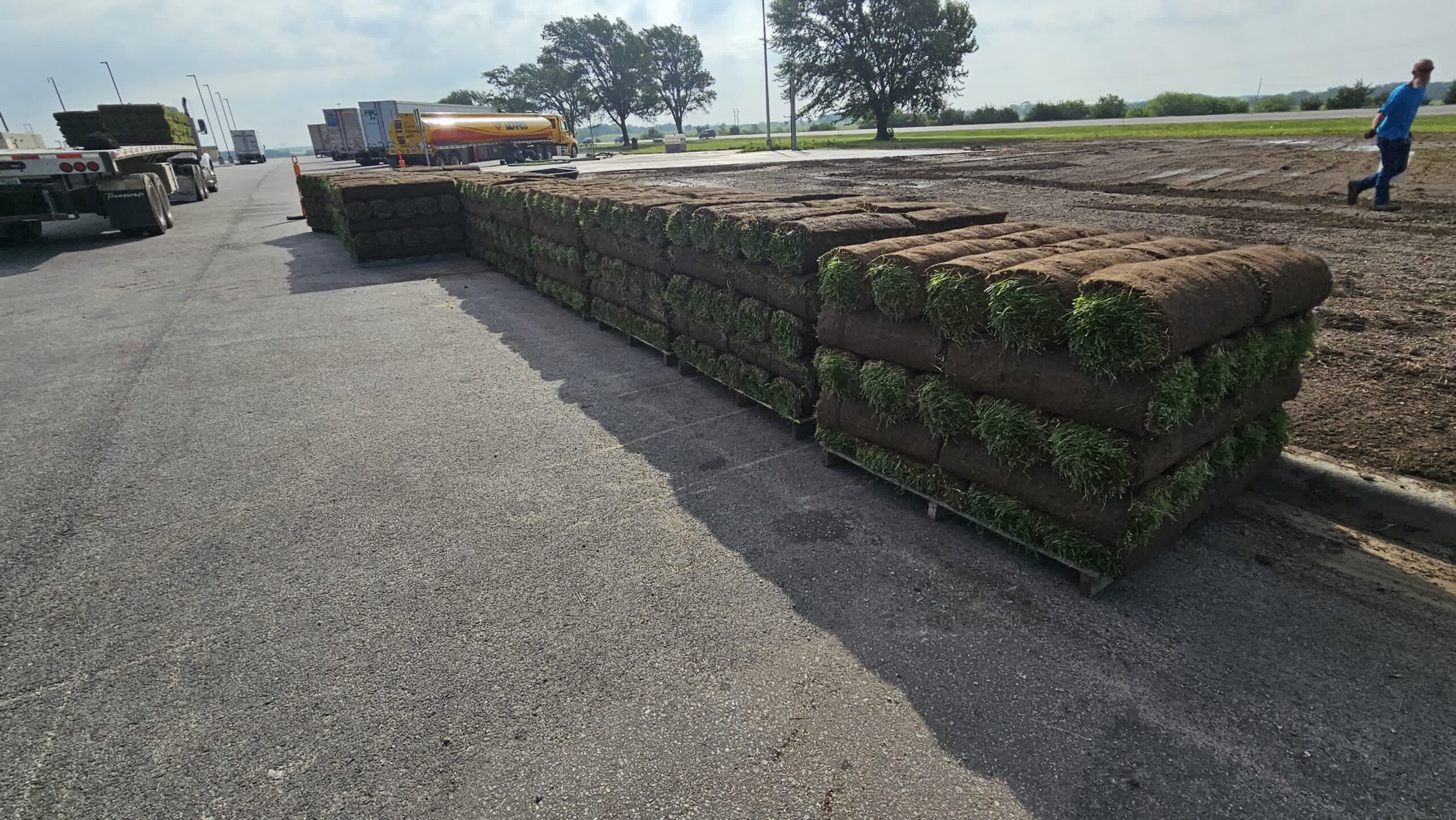Grow a Beautiful Yard with These Sod and Lawn Tips
Introduction: Creating a lush, green lawn doesn’t happen overnight—but it also doesn’t have to be overwhelming. Whether you’ve just installed new sod or want to improve the look of your existing lawn, success begins with knowing what your yard needs and when it needs it. Every season and every square foot of soil plays a role in shaping the health, resilience, and curb appeal of your landscape. From fresh sod care to long-term lawn maintenance and smart landscaping strategies, the steps you take now will shape the way your yard looks for years to come.
Proper lawn and landscaping care isn’t just about looks—it’s about nurturing healthy root systems, building soil health, and creating a sustainable outdoor environment. The good news is that with the right techniques and a little consistency, your yard can thrive year-round. Below, you’ll find helpful tips based on real lawn care guidelines and landscape planning strategies that work, whether you’re a beginner or just looking for a fresh approach.
Sod Care for a Strong Start
How to Water New Sod the Right Way
New sod needs water more than anything else during the first few weeks after installation. The moment it’s laid down, watering should begin. During the first 10 to 14 days, the soil beneath the sod must stay consistently moist to help roots develop and bond with the ground. Watering deeply in the early morning is best, as this gives the soil time to absorb moisture while preventing evaporation and fungal growth. As the sod begins to root, watering can gradually be reduced to encourage deeper root systems. Avoid walking on new sod during this period, as the pressure can shift the pieces and disrupt root formation.
When and How to Mow New Sod
Mowing too early can pull up new sod before the roots are ready. Wait until the sod is firmly attached to the soil—usually after about three weeks—before making the first cut. Make sure your mower blades are sharp to avoid tearing the grass, and never remove more than one-third of the grass height in one pass. Keeping your new lawn at the correct height will promote stronger growth and help prevent weeds from taking over early.

Lawn Maintenance That Builds Lasting Health
The Role of Mowing, Watering, and Fertilizing
Once your sod has taken root and your lawn is growing, regular maintenance becomes the key to long-term beauty. Mow at the proper height for your grass type, and stick to a schedule that never lets the lawn get too long or too short. Deep, infrequent watering is better than shallow, daily watering, as it trains the roots to grow deeper and become more drought-tolerant. Your lawn also needs nutrients, but timing matters. Avoid fertilizing right after sod installation—wait a few weeks or until your lawn is stable, then apply a balanced fertilizer to help fuel growth throughout the season.
Watch for Weeds and Soil Compaction
Even a healthy lawn can become vulnerable if the soil becomes compacted or weeds start spreading. Aeration helps loosen compacted soil and lets water and nutrients penetrate deeper into the root zone. If your lawn feels hard underfoot or water pools after rain, it may be time to aerate. Keep an eye out for common weeds and remove them early before they spread. A thick, healthy lawn naturally resists weeds, but proper mowing and fertilization also play a key role in keeping invaders at bay.

Smart Landscaping for Long-Term Curb Appeal
Plan with Your Space and Climate in Mind
Beautiful landscaping begins with a plan. Before planting anything, take time to observe your yard’s sun patterns, shade coverage, drainage issues, and natural flow. These factors determine what kind of plants, sod types, or groundcover will thrive in your specific location. Start small and scale gradually, using landscape beds, mulch, and edging to create clean lines and visual structure. If you’re starting fresh, select low-maintenance plants that suit your climate and soil type to save time and resources in the long run.
Improve Function and Beauty at the Same Time
Landscaping is not just about aesthetics—it can also improve the function of your yard. Trees offer natural shade and help regulate soil moisture. Mulch retains water and reduces weed growth. Even pathways and decorative borders can prevent soil erosion or protect high-traffic areas from damage. The right landscaping decisions help reduce your lawn’s overall workload while boosting its appearance. And as your plants grow in, they create a natural rhythm that supports pollinators, adds texture, and frames your home beautifully.

Conclusion
A beautiful yard starts with smart decisions from the ground up. Whether you’re laying down new sod or improving an established lawn, it’s the consistent, well-timed care that makes the biggest difference. Begin by giving your sod the moisture and protection it needs to root deeply. Follow that with a solid lawn maintenance routine, and round it out with thoughtful landscaping that fits your space and supports long-term growth. The reward is a healthy, green lawn that not only boosts your curb appeal but gives you a space you’re proud to enjoy. With these sod and lawn tips, your dream yard is well within reach. Get in contact with us to learn more about Lawn Care, Weed Control & Fertilization & Lawn Mowing.

"*" indicates required fields

Stephanie D.

Nolan A.

Tom F.

Anthony H.
 (316) 435-3509
(316) 435-3509 office@divine-lawns.com
office@divine-lawns.com